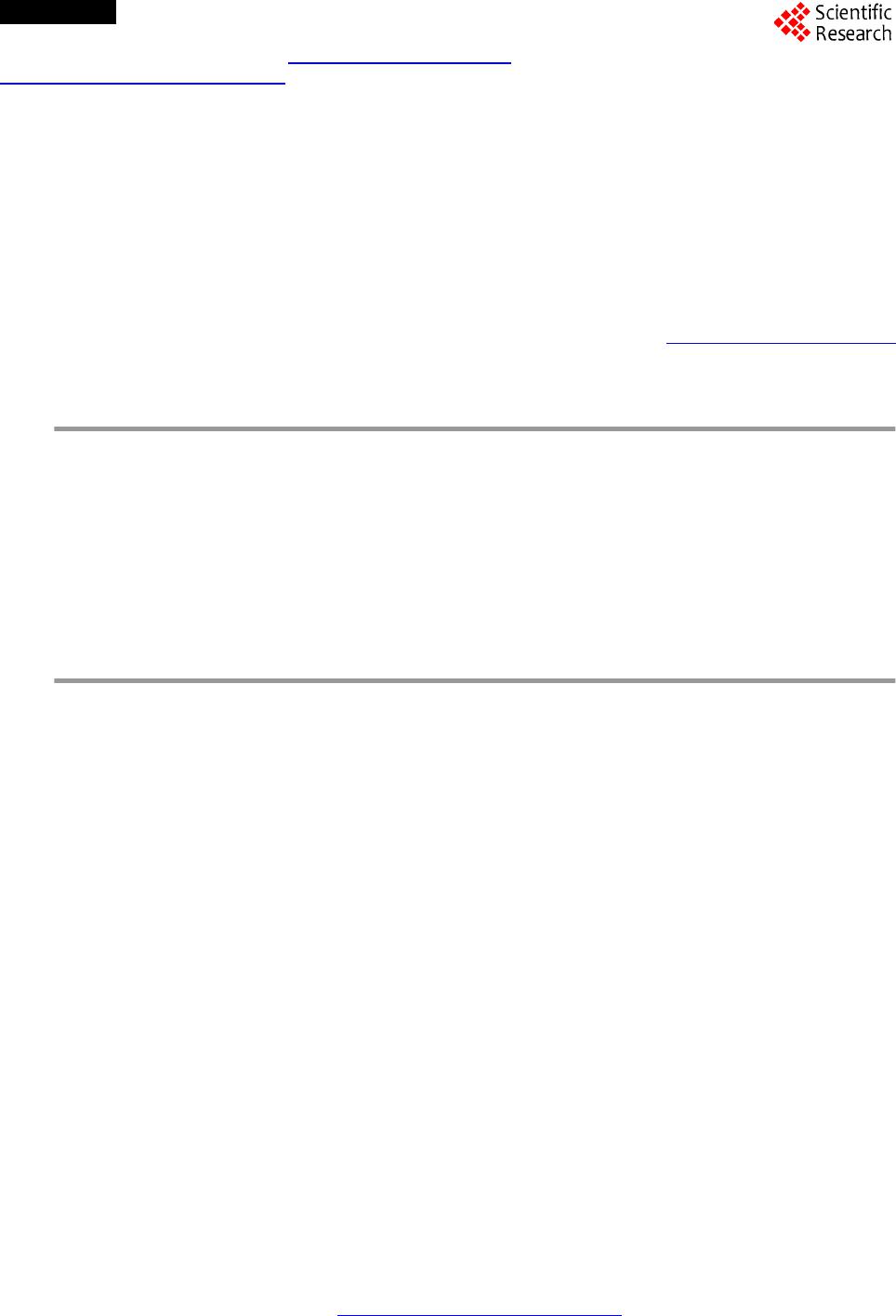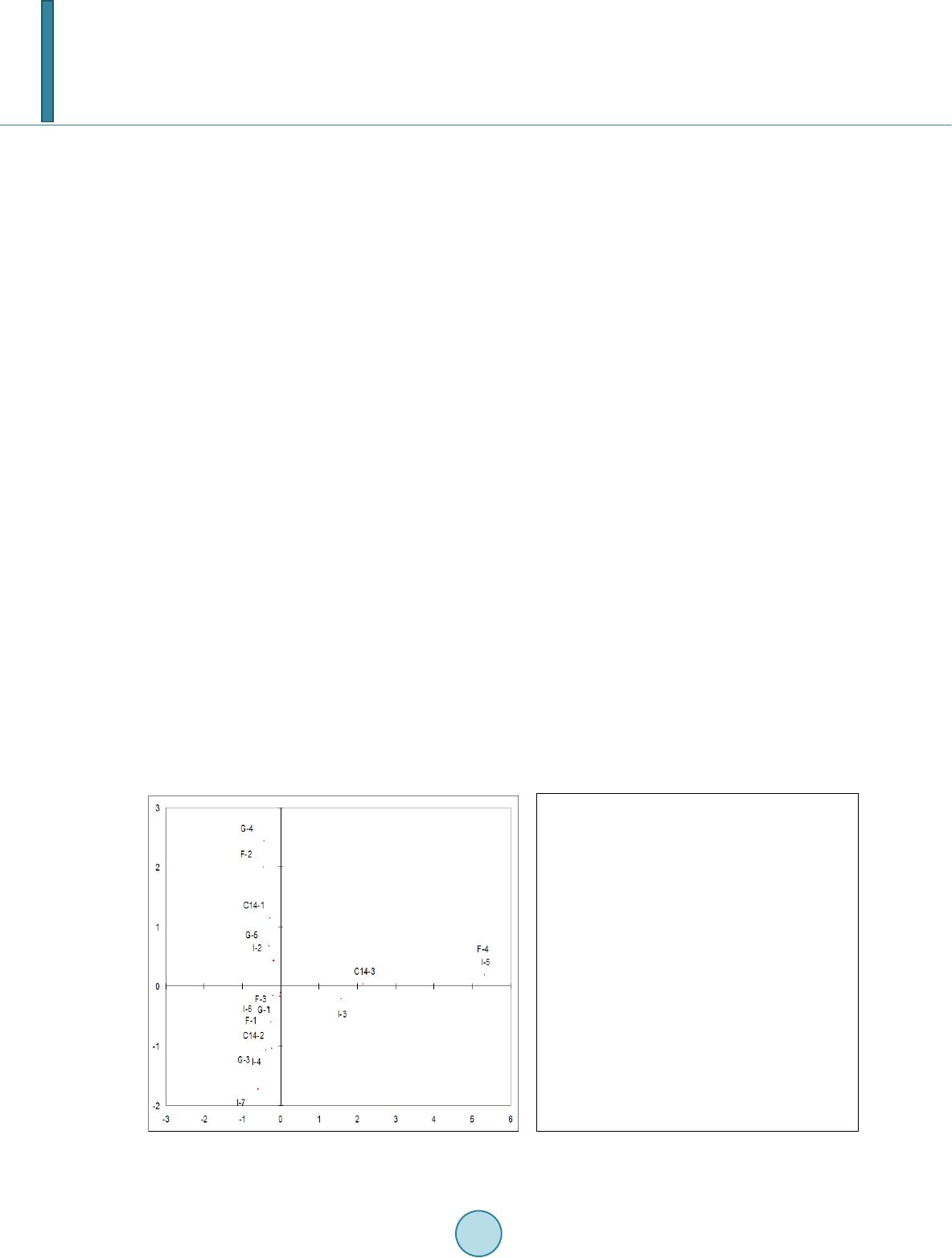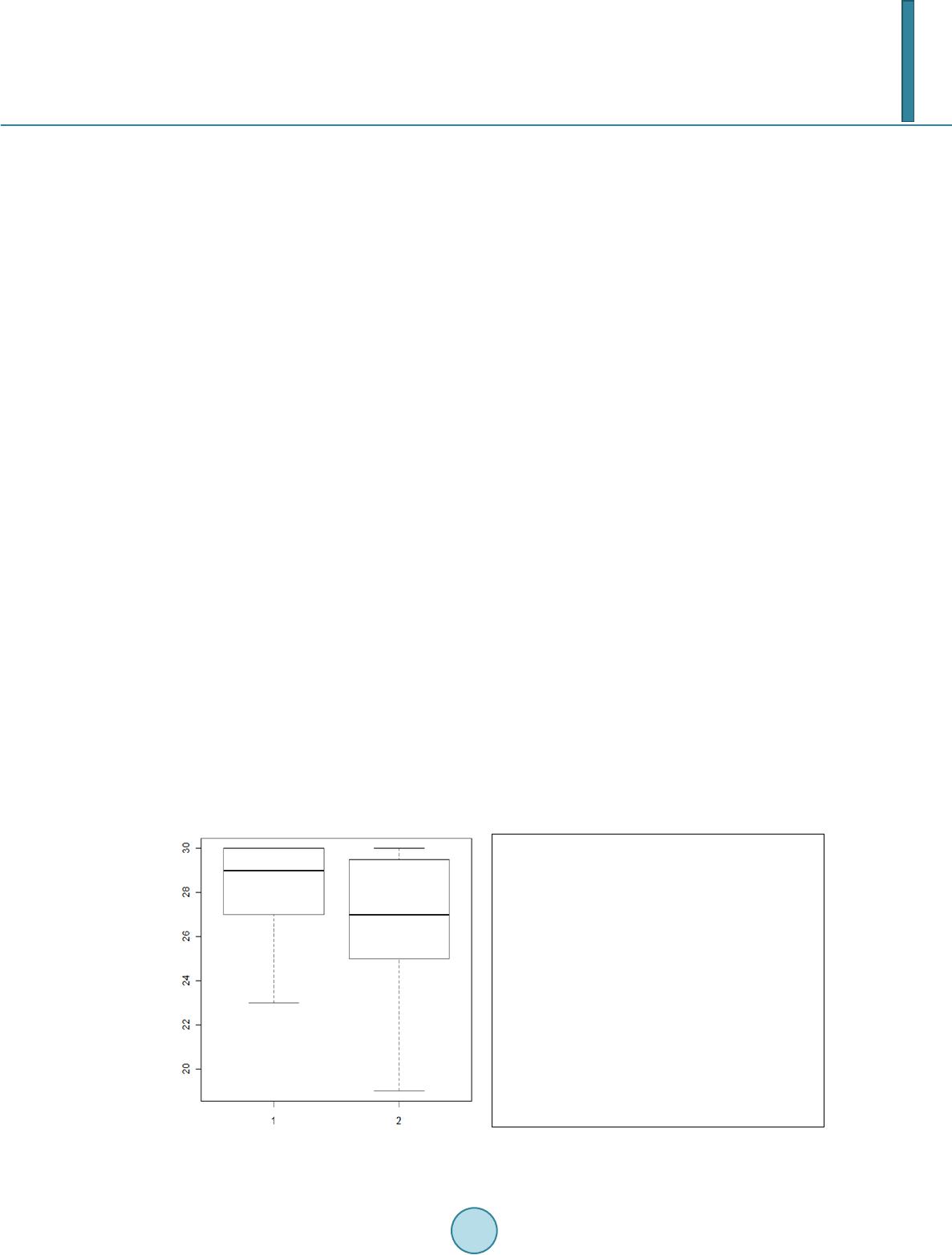 Open Access Open Journal of Social Sciences, 2014, 2, 61-66 Published Online February 2014 in SciRes. http://www.scirp.org/journal/jss http://dx.doi.org/10.4236/jss.2014.22009 How to cite this paper Rocca, C. La, Margottini, M. and Capobianco, R. (2014) Collaborative Learning in Higher Education. Open Journal of Social Sciences, 2, 61-66. http://dx.doi.org/10.4236/jss.2014.22009 Collaborative Learning in Higher Education Concetta La Rocca, Massimo Margottini, Rosa Capobianco Department of Education, University of Roma Tre, Rome, Italy Email: concetta.larocca@uniroma3.it Received November 2013 Abstract This paper presents the procedures and the outcomes of collaborative activities and of peer tutoring carried out by the students in the teaching of “General Didactics”, held at the University of Roma Tre, in ay 2012/13. Keywords Learning Community; Collaborative Learning; Peer Tutoring; Barometer; On-Going Orientation 1. Introduction Collaborative learning and peer tutoring in the university environment can positively influence students to maintaining a constant motivation and affection towards their study; they also help to reduce the drop-out and encourage greater regularity in the academic career. The international literature shows that this kind of activity, essentially performed as cognitive support for students in primary and secondary schools, have obtained very positive results (as in [1-7]). Experimental studies reveal that these teaching strategies produce positive results also in the academic envi- ronment, as a cognitive support, but especially within affective-motivational and socio-relational field (as in [8-13]). In this paper we will present the procedures and the outcomes of collaborative activities carried out by the students in the teaching of “General Didactics”, held at the University Roma Tre, in academic year 2012/13. The pilot study is divided into two operations: a) description and analysis of the data collected after the administra- tion of a questionnaire which aims to detect the climate experienced by the students themselves in the working groups; b) investigation on the fallout that collaborative activities have produced on the students’ performances: on average it will be observed if there will be a increase in the results achieved by students in the examination of “General Didactics” comparing the outcomes of those who have taken part in collaborative activities with those who did not participate. 2. Description of the Pilot Study on Collaborative Learning Experience in the Academic Environment: Context, Issues and Possible Actions The general hypothesis that has sustained this experience, and that addressed the study of the outcomes pro-  C. La Rocca et al. duced by the monitoring and by the evaluation, argues that the experiences of collaborative learning in the uni- versity contribute to the students’ acquisition of the meta-knowledge required to complete their own learning with profit and success. In other words, it is believed that a collaborative learning experience, activating practices of positive interde- pendence, may facilitate the integration of students into the University; also, through the enhancement of moti- vation and the reduction of anxiety-related examination, it may enable them to stem the drop-out and become more aware of their academic career, allowing their orientation in progress [14]. This experience took place in the ay 2012/13 within the course of General Didactics held in the Bachelor Course of Science in Education (Level I) of the University Roma Tre: the choice of this Teaching was carried out both for the consistency of the survey with its disciplinary contents, and the presence of some issues related to the context in which the course was held. In fact, it is aimed at first-year students who, being in the position of college freshmen, often show a certain confusion in understanding the academic dynamics; this discomfort is then increased by the large number of students who attend to the course (approximately 150). It was decided, therefore, to promote a collaborative learning experience in blended mode1, to facilitate the insertion of the freshmen, encourage their motivation to study, reduce the anxiety associated with the examina- tion, promote positive interaction among students. 3. Learning Together The choice to operate in blended mode meets the double need to ensure acceptance and feedback in in-presence lessons and enable the development of rich and articulated workshops in at-distance activities, avoiding opera- tional issues related to the management of physical spaces and times that always occur in the organization of collaborative activities. Before the kick-off the actual work, we held a seminar, open to all students, in which we gave an overview about theories and instructional strategies that deal with collaborative learning, with particular reference to the “cooperative learning” and “peer tutoring”, to highlight differences and similarities, in order to build a training event that could enhance both the collaboration in the group and the support between students of the same aca- demic level. After the seminar, addressed to the audience of students, we have listed the goals that each student will pursue, divided in main categories: cognitive and metacognitive objectives and emotional and relational goals. The first ones are intended to promote the use of descriptive language suitable from the point of view of scientific areas, the identification of significant information, the comparison of information and data by analogy and opposition, the fostering of awareness of the role played by the collaborative path in the construction of knowledge, the ability to synthesize materials in a final collective document, the reflection on the student’s own contribution to the achievement of the final product. The emotional and relational goals are directed to the acquisition of the capacity for dialogue and active listening to communicate content and emotions and to create a mutual support in the learning process. We then indicate the operational steps that have been taken for the formation of groups and the preparation of the online and in-presence activities. The collaborative activities have been proposed when the course was about at the middle of its development, so that the students had already acquired the relevant information for designing working groups. To promote freedom of choice, the groups have been formed independently by students them- selves, on the basis of shared interests; we suggested them to follow the instructions provided in the introductory seminar: do not exceed five units per group; locate a subject of further development (approved by the teacher); choose a name for the group, identify a student acting as coordinator and editor of the final work. The students notified their choices to the teacher through a special forum on the online platform— www.formonline.uniroma3.it, in the space reserved to the General Didactics course; then the teacher opened a forum for each group and named a disciplinary expert tutor for moderation and support. Once we finished set- ting up the teams, the choice of topics to explore, the attribution of the forum and tutors, we communicated to the students the date to start the study group, which had to conclude its path within the specified time. Finally, we identified the workshop day in which each group would present—to the whole audience of students—the fi- nal document (it must consist either in a hyper-text, or in a PowerPoint, or in a wiki text or in a concept interac- tive map). 1 Currently the term blended in education, refers to a teaching strategy that combines presence and online activities.  C. La Rocca et al. The monitoring of the climate generated in the group was achieved through a short questionnaire which worked as barometer2, gathering the opinions of the students about their experience of collaborative activity. Given the exploratory nature of this investigation, the barometer was built with a prominence of open-questions to allow students greater freedom of expression, and therefore it will be useful for the preparation of a more agile and structured barometer to use in future investigations. In the scientific literature, a barometer is an instrument for the detection of the self-perception of the climate in the group; it is generally used by the researcher during the training course to return a feed-back to the same participants about relational and productive actions occurred in the group. In the literature cases are also re- ported in which this instrument seems to have been felt by the participants to the group as an element of distur- bance or intrusion3. For this reason, in this context, we decided to administer the barometer at the end of the training process, as to offer the teacher and the observers a feed-back on the self-assessment of the climate ari- sen in the group, expressed by the participants themselves. The detection of the examination results of General Didactics exam has been focused on the observation of the examination marks obtained by the students taking part in collaborative activities in relation to the mark ob- tained by the students who did not take part in group activities. 4. Outcomes from Monitoring The barometer consists in 10 questions: the first three (A, B, and C) are structured questions, each consisting of predetermined responses, articulated according to a Likert scale with four levels (A lot, Enough, Little, Not at all)4; the others (D, E , F, G, H, I, L) are open-questions and therefore provide free answers in designated spac- es5. The questionnaires analyzed were 48. The encoding and decoding of the responses was carried out in SPSS, using macro-categories subsequent codification procedures for the answers to open-questions and quantitative conventional procedures for the answers to closed questions. The results obtained after administering the barometer were generally very positive because the students felt that collaborative activities allowed relations of positive interdependence, improved the relationship with the teacher and determined a favourable attitude to the examination. They also expressed the opinion that it would be interesting to practice group activities also in other teachings, because the research of material was useful and interesting and in-depth activities have enhanced learning, as teamwork “forced” them to reflect on their own processes of understanding. The students, in individual response to open-questions, identified the cognitive skills required to work in groups in becoming aware of their skills and sharing their knowledge; the relational skills were identified in lis- tening to the other and respecting the ideas of others in order to build a climate of collaboration that allows to organize the work and a positive management of conflicts through emotional commitment, confidence, deter- mination and a sense of responsibility. Most of the students believed that the ability to work in team can be ac- quired through experiences similar to the one they had and noted that within each group everyone had done 2Smith & Coenders (2002); Jones D. (2002); Svensson et al. (1999), cit. Mazzucconi S. Uno strumento per l’autovalutazione dei gruppi collaborativi: il barometro; in Calvani A. (2005) Rete, comunità e conoscenza. Erickson. Trento 3Ibidem 4(For reasons of space it is not possible insert the complete barometer so we list only the structured questions and answer choices) Barom ter for “Cooperative Learning” & “Peer Collaboration” activities monitoring and self-evaluation (Elaborated by Dr. Concetta la Rocca, PhD) Closed questions - A) Do you think that the activities of CL and PC to which you participated have determinated:1) group of students; 2) Improved the relationship with the teacher of the course; 3) Resu lted in a positive disposition towards the examination; 4) Built relations of positive interdependence among students. B) In carrying out the research and development of materials for of CL and PC in which you participated, did you think: 1) The search for materials was difficult/boring; 2) The search for materials was helpful/interesting; 3) The extension activities was helpful to enhance learning in general; 4) The extension activities was helpful to improve knowledge specific issues; 5) The work in group have “forced/helped” to reflect on your learning process; 6) It would be interesting to pra tice activities of group work in other teachings. C) According to you the organization of your group work, essentially managed by the st dents themselves, has produced: 1) Cooperation, 2) Competition; 3) Growth of interpersonal skills; 4) Good work management; 5) Misma agement of work; 6) A satisfactory final product. 5(For reasons of space it is not possible insert the complete barometer so we list only the open-questions) Barometer Learning” & “Peer Collaboration” activities monitoring and self-evaluation (Elaborated by Dr. Concetta la Rocca, PhD). Open-questions D) What skills do you think is necessary to have to work in a gro up? E) Do you think that you can acquire these skills? F) In the experience of CL and PC in which you participated, do you think that everyone has done his part? G) In working with the other students d valued? H) Do you prefer to study alone or in situations of collaboration or competition? In answer also explains why in your opinion. I) In reconsider the experience of CL and PC, do you have recognized critical elements? L) In the light of your experience of CL an d PC, do you have suggestions to offer?  C. La Rocca et al. his/her work in different ways assuming his/her responsibilities negotiated with their fellows. Also in expressing their views about studying in a group or alone, the majority of students indicated a prefe- rence for collective study to optimize the timing of work, to exchange ideas and opinions, to acquire knowledge of the mastered contents and of those which they did not master yet; some students pointed out that self-study is not an alternative to study in groups, and may be preferable when you have to face a test that requires personal processing. When asked to express any problems that emerged in the experience, a substantial majority of the students responded negatively, though there were a few positive observations such as: “At the beginning I had some problems. Then the problems were alleviated with the help of the tutor and the teacher”; “My poor attendance”; “Not all have done the same amount of work”. As students have faced an experience of “cooperative learning” and “peer tutoring” it seemed interesting to ask the question of how they have interpreted, implemented and lived the commitment to organize and manage themselves (albeit with the support of tutors) within the working group. Therefore it was decided to perform a multiple correspondence analysis among the items concerning the “organization of work in the group”. The re- sults of the analysis are shown in Figure 1. The letters and numbers represented on the Cartesian plane correspond respectively to the items and to the response alternatives; to develop the understanding of the interpretation which will be proposed, the questions and answers that correspond to the points contained in circles are shown in full in the box next to the diagram (eg, F-3 F = Item, response alternative 3). A first evidence concerns the density of the aggregation of points which is higher in the part of the Cartesian plane to the left of the axis of the ordinates. In II and III are placed the answers that express positive reviews. In the space to the right of the axis of ordinates (I e IV quadrant) lie the most critical judgments, which, as it is evident, are numerically scant. The items circled by a continuous line include the responses affirming that the organization of group work, essentially managed by the students themselves, has produced a good management of working, in which every- one felt appraised for cooperating actively, depending on the tasks undertaken to achieve the ultimate goal. However, the graphic highlights how the division of work has also yielded the effect, quite usual in these con- texts, of producing some defections since not everyone has done the same amount of work. It seems interesting to compare this last problem underlined by the students with the points contained in the dotted and dashed line circle of the I quadrant. In fact, some students recognized a critical element in their poor attendance to the course and they admitted that only the presence of their more motivated and active companions has allowed them to achieve a good performance to complete the work. These observations are valuable because they seem to substantiate the hypothesis that in collaborative activities students can achieve a higher level of III Quadrant F- 1 Do you think that everyone has done his part in the experience of CL and PC which you took part in? Yes / F- 3 - Everyone has worked differently (diversification of tasks); I - 6 In reconsidering your experience of CL and PC have you noticed any critical elements?Yes, not all have done the same amount of work; G -1 In working with the other students did you feel appraised? G – 3Yes;; C - 4enough; ) According to your opinion the organization of your group work, essentially managed by the students themselves, has produced: Good work management; I - 4 In reconsidering your experience of CL and PC, have you noticed any critical elements?Sometimes, especially at the beginning. Then the problems were attenuated with the help of the tutor and the teacher; I - 7Yes, the physical distance between the components of the group Figure 1. Multivariate analysis.  C. La Rocca et al. awareness of their own learning processes and responsible commitment with which it is desirable to tackle the course of study. Returning to the reading of the data shown in the III quadrant, the information contained in the dashed-lines circles and in the dotted-lines circle, account for the extension of each other, because students believe that cer- tain critical elements can be generated by the physical distance among the group members, though this criticality was attenuated over time thanks to the intervention of the teacher and the tutor. Again, the opinion of the students can be read in a favourable way, as it shows how the discomfort of the dis- tance can be muffled or overcome by using a digital platform that allows the solving of the issues posed by the organization of in-presence activities with the creation of a friendly and easy to use online environment. Figure 2 shows the result of the “General Didactics” exam, about which, as we have said, the marks obtained by the students who took part in the collaborative work in opposition to the score of the students who did not take part in group activities was observed. It is necessary to emphasize that the perspective assumed for the statistical study of the data was purely de- scriptive and exploratory, given that in reference to ay. 2012/13 the population of students who have participated in collaborative groups was taken into account as well as the population of students who did not take part in them. By comparing the box-plots (Figure 2) it is possible to notice not only that the average mark obtained in the exam of “General Didactics” by the students who participated in the group activities is on average higher than those who did not take part in them, but also that in the first group there is less variation between the marks ob- tained by each student compared to the second group, which is much less cohesive, as the minimum score achieved by students in the 1st group is “23” while that achieved by the second group is “19”. 5. Concluding Remarks, Problems and Future Developments The pilot study was essentially very positive: the students felt involved in the building of learning and teaching paths, which they helped with their shared knowledge. The operations of analysis, synthesis, evaluation and online correction of the pathways followed and of the study materials, as well as the in-presence public presen- tation of the final work, have helped to reinforce their self-esteem, their sense of belonging to a community that learns and their positive disposition towards the discipline and to the final exam. According to these considera- tions, we will propose the same experience within the Teaching of “General Didactics” in the forthcoming aca- demic year, starting from the pilot study we carried on and bearing in mind the problems that arose. It would be also desirable to make the collaborative activities compulsory, recognizing them through the bestowing of an adequate number of credits, so that the collaborative activities would become a structural part of Teaching, thus allowing all students to experience a clearly uplifting modality of study and of relationship. It will be appropri- ate to make the barometer more agile, building it with a majority of closed questions, as well as to consider the 1: students who participated in the groups (n1 = 48 students, average mark obtained = 28,58, standard deviation = 1,74) 2: students who don’t participated in the groups (n2 = 99 students, average mark obtained = 26,98, standard deviation = 2,57) Figure 2. Box-plots.  C. La Rocca et al. possibility of administering it two times (one during the course and one at the end of it), to allow students an in progress feed-back and observers a final look on the climate developed in the working groups. References [1] Topping, K.J. (2005) Trends in peer learning. Educational Psychology, 25, 631-645. http://dx.doi.org/10.1080/01443410500345172 [2] Topping, K.J. (2001a) Peer assisted learning: A practical guide for teachers. Brookline Books, Cambridge. [3] Topping, K.J. and Ehly, S. (1998) Peer-assisted learning. Lawrence Erlbaum, Mahwah. [4] Slavin, R.E. (1990) Co-operative learning: Theory, research and practice. Prentice Hall, Englewood Cliffs. [5] Johnson, D.W. and Johnson, R.T. (1986) Learning together and alone. 2nd Edition, Prentice Hall, Englewood Cliffs. [6] Fantuzzo, J.W., Riggio, R.E., Connelly, S. and Dimeff, L.A. (1989) Effects of reciprocal peer tutoring on academic achievement and psychological adjustment: A component analysis. Journal of Educational Psychology, 81, 173-177. http://dx.doi.org/10.1037/0022-0663.81.2.173 [7] Sharpley, A.M. and Sharpley, C.F. (1981) Peer tutoring: A review of the literature. Collected Original Resources in Education, 5, 7-C11. [8] Aoun, C. (2008) Peer-assessment and learning outcomes: Product deficiency or process defectiveness? Educational Assessment Annual Conference, September 2008, Cambridge. [9] Sluijsmans, D.M.A., Brand-Gruwel, S., Van Merrienboer, J.J.G. and Martens, R.L. (2004) Training Teachers in peer assessment skills: Effects on performance and perceptions. Innovation in Education and Teaching International, 41, 59-78. http://dx.doi.org/10.1080/1470329032000172720 [10] Griffin, B.W. and Griffin, M.M. (1997) The effects of reciprocal peer tutoring on graduate student achievement, test anxiety, and academic self-efficacy. The Journal of Experimental Education, 65, 197-209. http://dx.doi.org/10.1080/00220973.1997.9943454 [11] Pigott, H.E., Fantuzzo, J.W. and Clement, P.W. (1986) The effects of reciprocal peer tutoring and group contingencies on the academic performance of elementary school children. Journal of Applied Behavior Analysis, 19, 93-98. http://dx.doi.org/10.1901/jaba.1986.19-93 [12] Wolfe, J.A., Fantuzzo, J.W. and Wolter, C.F. (1984) Student-administered group-oriented contingencies: A method of combining group-oriented contingencies and self-directed behavior to increase academic productivity. Child and Fa- mily Behavior Therapy, 6, 45-60. http://dx.doi.org/10.1300/J019v06n03_04 [13] La Rocca, C. (2012) Il peer tutoring nell’orientamento universitario. Punti di forza e criticità, in MeTis, Anno II. 1, Progedit. s.r.l., Bari. [14] Margottini, M. and Pavoni, P. (2012) La promozione delle competenze strategiche per l’auto-orientamento nella scuola secondaria superiore: proposta di strumenti on line per l’autovalutazione. in MeTis, Anno II. 1.
|